In the realm of technological evolution, artificial intelligence (AI) stands as a beacon of transformative power, heralding a future brimming with potential and promise. As an avid observer of AI trends, my attention has been particularly captured by the remarkable growth and widespread adoption of large language models (LLM’s) like ChatGPT. While the ethical quandaries posed by AI technologies, including ChatGPT, stir a complex brew of considerations, it’s undeniable that these innovations are set to reshape industries and redefine the fabric of our daily existence. My conviction runs deep: AI, in its infinite potential, will complement rather than supplant the essence of humanity. The journey ahead promises to be one of co-evolution, where human ingenuity and artificial intellect converge, unlocking unprecedented opportunities and facing challenges head-on.
Artificial Intelligence in Healthcare
AI’s integration into healthcare over the next decade is poised to usher in a new era of medical innovation, significantly enhancing diagnostic precision and treatment efficacy.
Artificial Intelligence in Radiology
Among the forefront of these advancements, AI-enabled medical imaging software is gaining momentum, promising to revolutionize how healthcare professionals diagnose and tailor treatments for patients. This leap forward not only aims to elevate patient outcomes but also seeks to streamline healthcare delivery, making it more cost-effective. For instance, a study published in “Nature Medicine” demonstrated the use of AI in interpreting chest radiographs, substantially improving the detection of diseases like tuberculosis, showcasing the potential to bridge gaps in medical expertise globally.
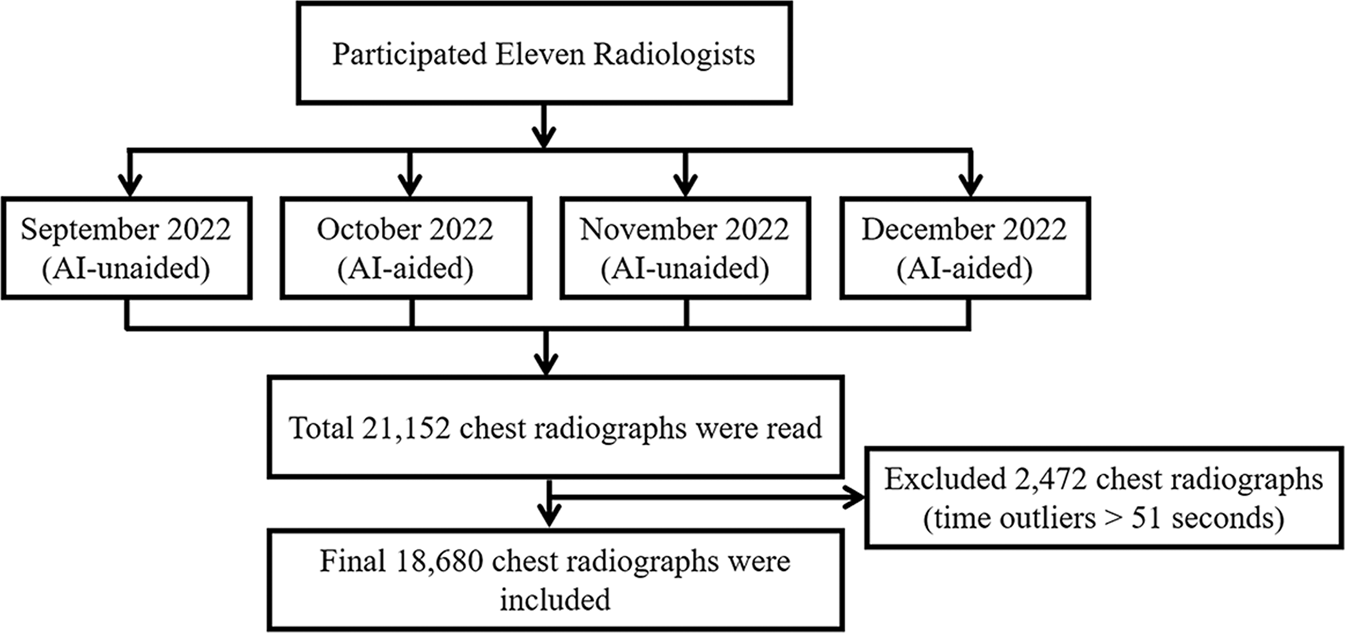
Robotic Assisted Surgery: da Vinci system
Parallelly, the domain of robotics-assisted surgery is witnessing transformative improvements in precision and efficiency, marking a departure from traditional surgical methods. A notable example includes the da Vinci Surgical System, which has been extensively adopted for various procedures, enhancing surgical accuracy and reducing patient recovery times. Research published in “The Lancet” highlights significant advancements in the success of robotic-assisted surgeries in urology and gynecology, indicating significant reductions in postoperative complications and hospital stays.
Components of the da Vinci system:
Surgeon Console

PATIENT CART
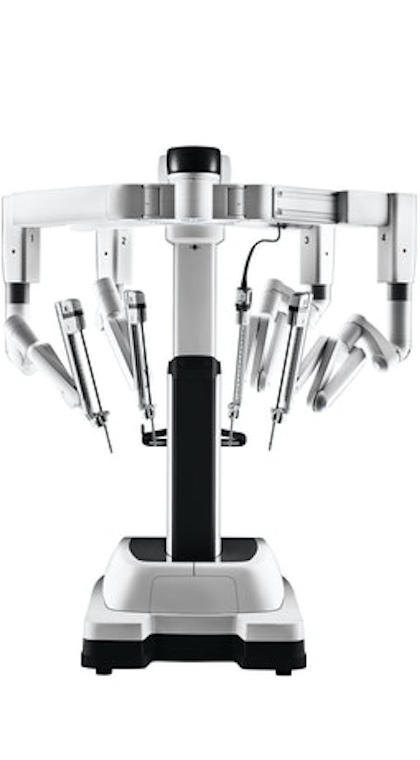
VISION CART
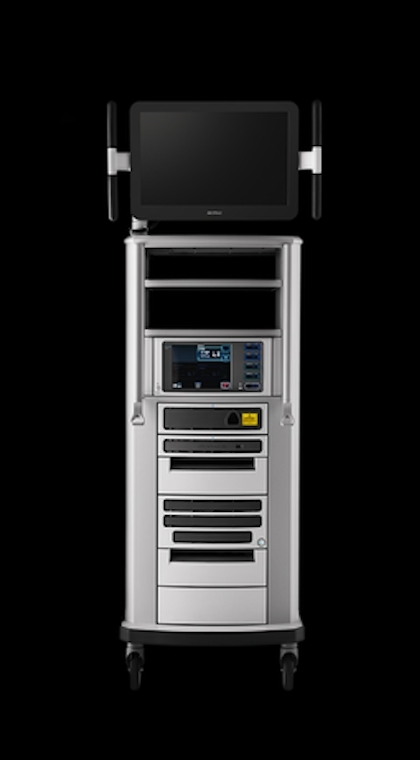
Future of AI in Healthcare
The future of AI in healthcare is not just promising; it is poised to revolutionize the way we approach medical diagnostics, treatment, and patient care. The continuous stream of innovations and breakthroughs in this field underscores its potential to tackle some of the most pressing challenges in healthcare.
One compelling example of AI’s transformative impact in healthcare is its application in medical imaging. AI algorithms have significantly improved the accuracy and efficiency of diagnosing diseases from medical images. A pioneering case study is Google Health’s development of an AI model that can detect breast cancer in mammograms more accurately than human radiologists, as detailed in a study published in Nature in January 2020. This innovation not only enhances diagnostic precision but also promises to make life-saving early detection more accessible worldwide. [Nature: https://www.nature.com/articles/s41586-019-1799-6]
In the realm of drug discovery and development, AI is accelerating the process of identifying new medications. A notable example is the use of AI by DeepMind to solve the structure of proteins, a breakthrough reported in Nature in November 2020. Understanding protein structures is crucial for developing drugs to target diseases at a molecular level. DeepMind’s AlphaFold has been heralded for its ability to predict the 3D shapes of proteins with unprecedented accuracy, potentially shortening the timeline for new drug discovery and bringing treatments to market faster. [Nature: https://www.nature.com/articles/s41586-020-03348-4]
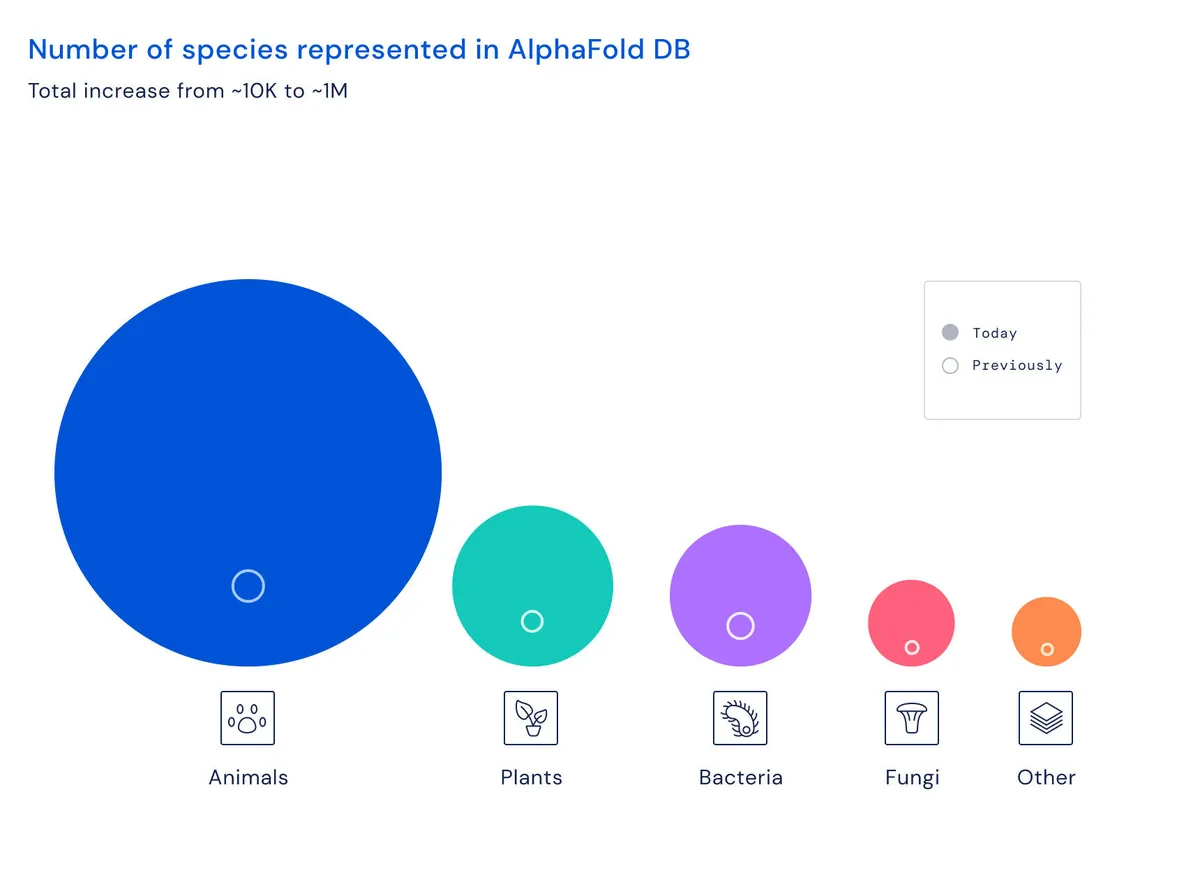
Furthermore, machine learning algorithms are being leveraged to personalize patient care. A study conducted by researchers at MIT and published in JAMA Network Open in May 2019 demonstrated how machine learning could predict the optimal antidepressant treatment for patients suffering from depression, based on a wide range of data including medical history and genetic information. This approach to precision medicine could vastly improve treatment outcomes for patients by tailoring therapies to individual patient profiles. [JAMA Network Open: https://jamanetwork.com/journals/jamanetworkopen/fullarticle/2734064]
Each of these case studies exemplifies the profound and varied ways in which AI is set to enhance the healthcare landscape. From improving diagnostic accuracy and expediting drug discovery to personalizing patient treatment, AI’s role in healthcare is expanding rapidly. As these technologies evolve and become more integrated into clinical settings, they hold the promise of significantly improving quality of care, making healthcare more efficient, accessible, and tailored to individual patient needs.
Trends and Predictions for the Next Decade
The impact of Artificial Intelligence (AI) on our daily lives is already profound, and the next decade promises to bring even more groundbreaking advancements, particularly in the realm of autonomous vehicle technologies. While companies like Google have pioneered developments in the self driving cars and-driving technology, the market for autonomous vehicles remains vast and ripe with opportunities. AI stands at the cusp of revolutionizing transportation technology, heralding a future where vehicles operate independently, without human intervention.
This evolution in autonomous driving has the potential to drastically reduce traffic congestion and significantly enhance safety on our roads. The vision of a world where cars navigate seamlessly, avoiding accidents and optimizing traffic flow, is not just a pipe dream but a tangible future made possible by AI. As these technologies mature and become more integrated into society, the benefits could extend beyond convenience, offering environmentally friendly solutions by optimizing fuel efficiency and reducing emissions. The journey toward fully autonomous vehicles is a complex one, involving advancements in machine learning algorithms, sensor technology, and regulatory approvals, but the promise it holds for transforming transportation is unparalleled.
Ethical Concerns
AI is rapidly becoming widely used. This is a concern because the growing use of artificial intelligence can cause job losses, increase economic inequalities and increase socio-political disparities. AI could be used for malware and e.g. to create automated systems. This could lead to a new age in warfare waged through machines that has catastrophic consequences. AI has ethical ramifications, which are difficult to overlook.
Possibilities in AI: potential applications and developments
As technology evolves and becomes mainstream, many applications and developments are planned across different business sectors. The healthcare sector is deemed by some to possess huge potential. AI-enabled medical tools are helping doctors improve patient care by identifying the best possible diagnosis. Various companies have begun testing AI based machines and robots as surgical instruments. Other areas in which artificial intelligence can be beneficial are customer care and marketing.
Autonomous Vehicles
Autonomous vehicles are set to redefine the landscape of transportation in the coming years. The surge in interest and development of self-driving vehicles is propelled by increasingly sophisticated algorithms and the integration of more advanced sensors, making these vehicles smarter and more reliable. This leap in technology not only promises to alleviate traffic congestion but also aims to significantly enhance road safety. The synergy between ridesharing services and autonomous driving technologies is poised to improve urban mobility, minimizing vehicle traffic in city centers.
Moreover, the advent of autonomous transportation extends beyond roadways; it is revolutionizing logistics and last-mile delivery. By enabling quicker, more efficient delivery of goods, these technologies underscore a commitment to sustainability. A noteworthy addition to the realm of autonomous vehicles is the development of the AI-powered flying car by Archer. This innovative venture introduces a new dimension to urban transportation, promising to reduce commute times drastically by taking to the skies. Archer’s flying car, leveraging cutting-edge AI for navigation and safety, embodies the future of transportation, where efficiency and sustainability go hand in hand. This integration of autonomous vehicles within transport networks, whether on the ground or in the air, heralds a new era of mobility, characterized by seamless, safe, and sustainable transportation solutions. To learn more about Archer’s flying taxi, check out this video https://www.youtube.com/watch?v=Ao5XmGCBCkI or visit Archer.com
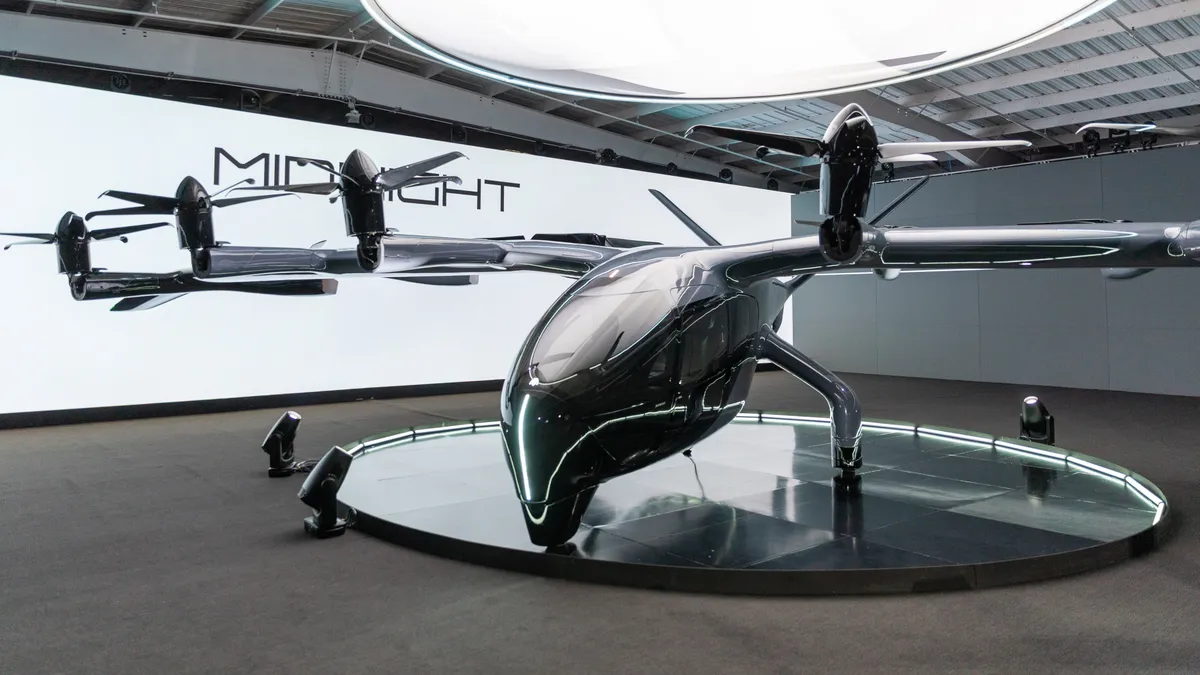
Predictions for the future of Artificial Intelligence: forecasts for the next decade
As society moves towards the 21st century, technological advancement continues shaping the world around you. There are few technology advancements that are deemed as exciting as Artificial Intelligence. As technology advances in artificial intelligence it can change the face of the world in surprising directions. AI has overpowered humans in many fields, but experts believe it could change the landscape of several industries. Artificial intelligence may help solve many health problems and make it more affordable.
AI and cybersecurity
Tech has double-edged, especially when dealing with bad actors. Cybersecurity software can analyze large volumes of information to find anomalies and analyze data. Alternatively, the technology can help reduce the likelihood of damage from an attack by increasing the response time. Although similar AI techniques are used for defending against attacks, protecting AI could become very problematic. Related: Futures Founders Guide to Artificial Intelligence.
AI for Climate Change and Sustainability
AI will help address global warming by helping to promote a sustainable future for all. The AI-powered Climate Model can analyze vast amounts of climate information for forecast of weather extremes, tracking pollution patterns & monitoring impacts on ecosystems. AI enabled intelligent grid solutions can maximize the power distribution by balancing renewable resources and demands and ensuring efficient and renewable energy sources and consumption. AI algorithms will help governments take action to mitigate environmental hazards and help them predict and mitigate risks.
Increased demand for AI-related skills in the workforce
The increasing use of AI in workforce may cause countless individuals concerns about jobs being impacted by computer-generated technologies. AI must be thought of as a complement to a human capability, rather than replacing it. Increasing demand from companies will increase as AI becomes embedded into various industries, it is expected that this will increase in demand. People looking to improve their careers should consider acquiring more AI technology.
Artificial Intelligence in Education
AI is changing education through personalisation to help students. Intelligent Tutoring will analyse individuals’ learning habits, progress, and challenges, for personalized content and assistance. AI-powered analytical tools can help educators improve students’ performance. Teacher data may be used by virtual assistants and a teacher to create targeted and customized education plans for students, and to foster a more inclusive learning experience.
The Accuracy of AI Systems is Dependent on the Training Data
Data is often inaccurate when using AI and contains shortcomings. However accurate data processing and problem formulating enables a user to construct limitations in models using synthetic and targeted sampling techniques. Aside from its dependence on data, AI can be used for other tasks like data mining predictive analytics.
Recent Advancements in AI Technology
AI is gaining rapidly in popularity as advances in robots, machine intelligence, machine vision and artificial intelligence occur each day. The result of these actions was decreased human interference and human effort. The key industry sectors witnessing the latest technological developments include education, healthcare and finance. These developments have helped to accelerate artificial intelligence and the human future. The risks in data security and privacy are often more severe – ethical problems may arise and new laws and regulations are needed.
What Did the Future of Artificial Intelligence Look Like 10 Years Ago?
The concept of AI has captivated humans since it first became a buzzword years earlier. We were astonished by exciting possibilities and afraid to think about making machine models. It often obscuring how much AI was actually doing. However, AI was already part of the game industry, as it had been a major challenge. In addition, AI was already a major component of chess and a game of translating.
Increased Use of Artificial Intelligence in Cybersecurity
In the next 10 years, AI will be the mainstay for cybersecurity. Recent trends and predictions suggest that AI is able to detect and prevent cybersecurity threats, as it predicts and responds in real-time. Major areas where AI can make significant impacts include the development of better-known threat detection tools. The system is capable of analyzing vast amounts of information by applying machine intelligence algorithms and identifying new and emerging cyber threats, and responding to new and evolving threats more easily.
Concluding Thoughts
The widespread discourse on Artificial Intelligence (AI) has spawned numerous myths, notably the fear that AI will render human jobs obsolete. This perspective, however, overlooks the nuanced reality of AI’s impact on the workforce. Rather than eliminating jobs en masse, AI is reshaping the nature of work, necessitating new skills and specializations. This transformation underscores the potential for personal and professional growth, as individuals are encouraged to adapt and thrive alongside emerging technologies.
In the healthcare industry, for example, AI’s role has been predominantly augmentative, enhancing productivity and fostering creativity. AI-assisted diagnostic tools have improved the accuracy and speed of disease detection, supporting medical professionals rather than supplanting them. Such advancements highlight AI’s capacity to augment human work, paving the way for innovative approaches to patient care and research.
The economic implications of AI’s integration into the workforce are complex and warrant careful consideration. While certain roles may become automated, AI also creates new job opportunities in fields like technology development, data analysis, cybersecurity, and AI ethics. This shift necessitates a balanced approach to AI integration, emphasizing the importance of retraining programs, lifelong learning, and policy initiatives aimed at facilitating workforce adaptation to technological advancements.
Moreover, the ethical deployment and regulation of AI technologies are paramount. Establishing ethical guidelines and regulatory frameworks is essential to ensure AI’s responsible use. Initiatives by governments, international organizations, and industry leaders are crucial in shaping policies that address the socioeconomic impacts of AI, ensuring that its benefits are widely distributed and that potential harms are mitigated.
Embracing AI necessitates a mindset shift, viewing it not as a threat but as a tool for augmenting human capabilities and opening new avenues for personal and professional development. By fostering a culture of adaptability and continuous learning, society can harness AI’s potential to enhance the quality of work and life, ensuring a future where technology and humanity coalesce to create a more efficient, creative, and inclusive world.
Sources
https://www.nature.com/articles/s41746-023-00829-4
https://www.intuitive.com/en-us/patients/da-vinci-robotic-surgery/about-the-systems
https://www.cnet.com/roadshow/news/archer-reveals-its-electric-air-taxi-for-10-minute-flights-to-the-airport/
https://jamanetwork.com/journals/jamanetworkopen/fullarticle/2734064
https://www.nature.com/articles/s41586-020-03348-4

